The Bubble Dome Story (Shambhala 2012)
Have you ever wanted your very own geodesic dome home? A bunch of my friends did. So we made one and took it to Shambhala, the world’s premiere electronic music festival. Read below to see how it all went down.
The mathematicians in the group calculated the dimensions and materials required to build 5/8 of a full sphere using information from that wonderful source of almost unlimited information: the interwerbz. A whole bunch of ten foot lengths of steel tubing were procured, and work began.
Step 1: CUTTING
Using my dad’s circular saw and metal-cutting blades (we wore through 3 blades by the end), we produced over 150 poles, none more than 1/8″ off the desired length. In order to make precise cuts, we set up a simple guide system on our workbench (actually my dad’s wooden scaffolding, put to use as a workbench). After every tenth cut, we also did a measurement to ensure we were still getting the same length of pole. There were three different lengths required, so we colour-coded them with black, red, and gold spray paint before making the cuts.
Here, on the left, you can see how we butted the pole up against a board clamped to the workbench. On the right, blocks on either side of the pole holds it snugly in place and provide a surface for the circular saw to slide across:
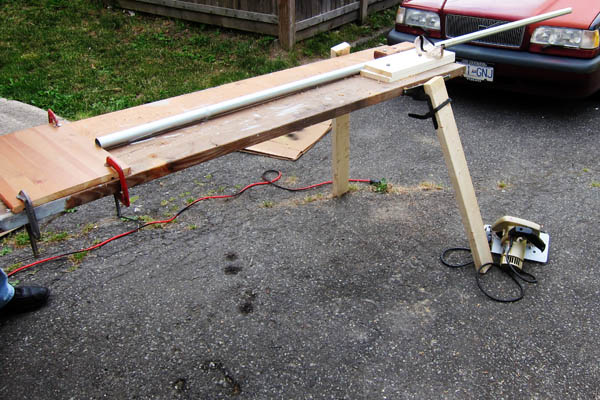
Table guide setup for cutting steel tubing with a circular saw
Power tools are fun! Note safety goggles and gloves to protect against the tiny bits of hot flying metal (photo by Conrad Nickels).
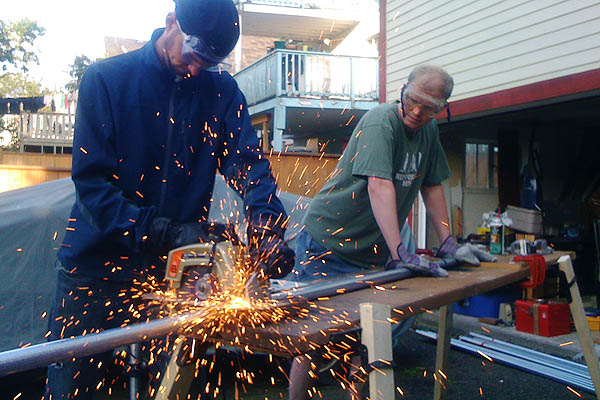
Cutting steel tubing with a circular saw
How many UBC graduates does it take to cut a piece of steel tubing? Apparently seven: one to cut, one to hold, one to take photos, and four to eat pizza, drink beer, and supervise.
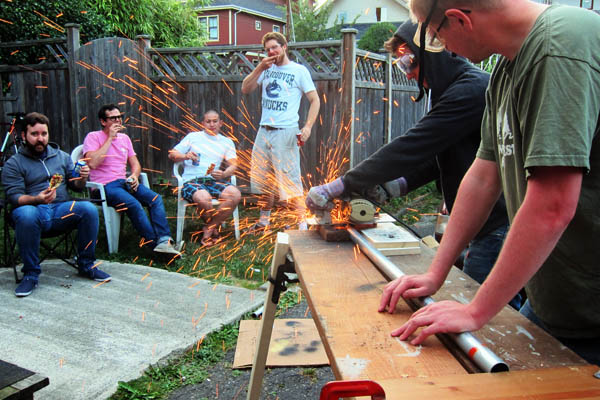
Sparks flying:
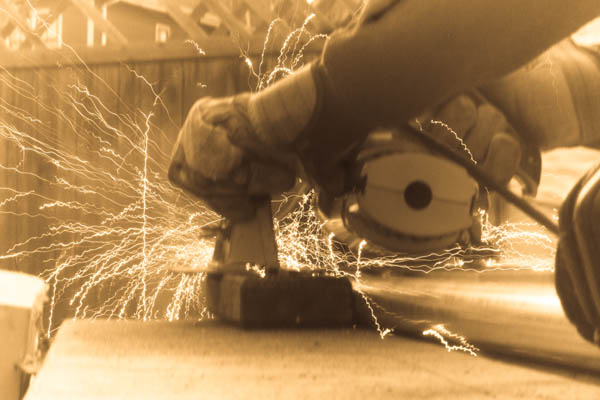
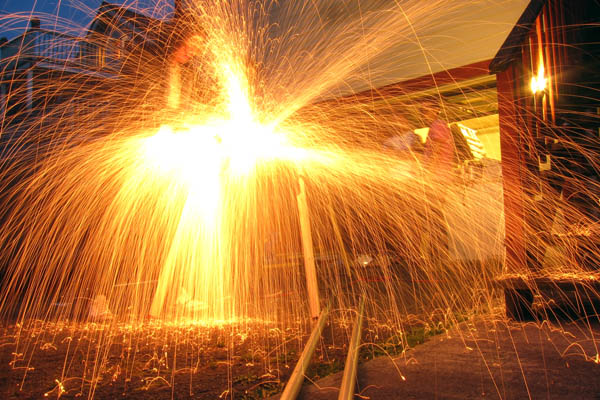
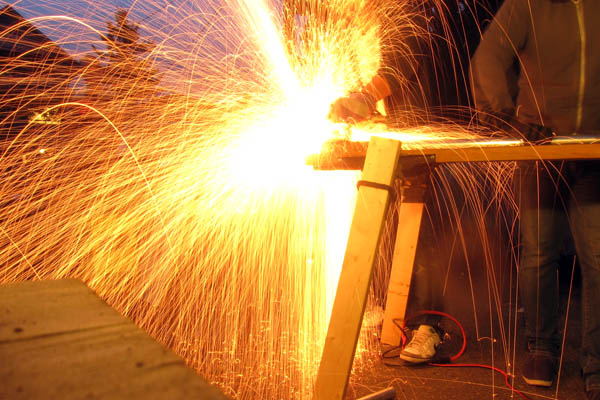
Step 2: CRUSHING
Using an arbor press with a four foot piece of metal electrical conduit slipped over the handle to increase leverage, the end of each piece of steel tubing was flattened. This step is clearly visible in the video below. The seam that runs lengthwise down the steel tubing (easy to see if you look inside) was always lined up at a 45 degree angle from the horizontal plane to avoid splitting or buckling the metal.
Step 3: DRILLING HOLES
Using a drill press (borrowed from the Vancouver Tool Library) mounted on our workbench, we carefully drilled a hole slightly larger than the diameter of the bolts we planned to use for assembling the dome. Before each and every single hole, cutting oil was added to the drill bit. Don’t skip this step! Here, John drills through a flattened section of steel tubing with the drill press:
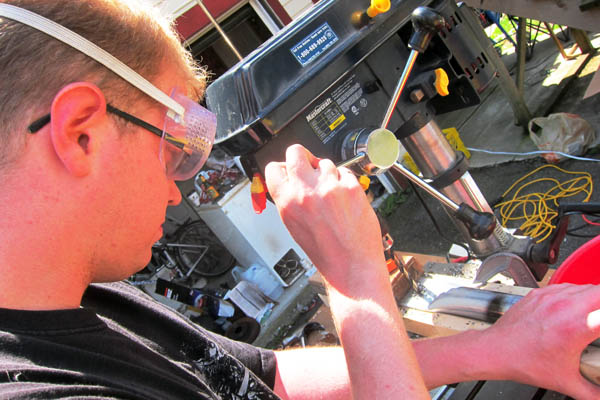
Drilling a hole in steel tubing for a geodesic dome
Step 4: BENDING
For our geodesic dome to work, the flattened tip of each piece of steel tubing had to be bent to the correct angle, otherwise we’d end up with a big, flat set of interconnected metal triangles. To get the angle right, we bolted one of my dad’s vices to a board, then attached a lightweight piece of perforated board to the base and marked lines on it at the correct angle. Jeremy drinks beer while steel tubing bends itself to the correct angle:
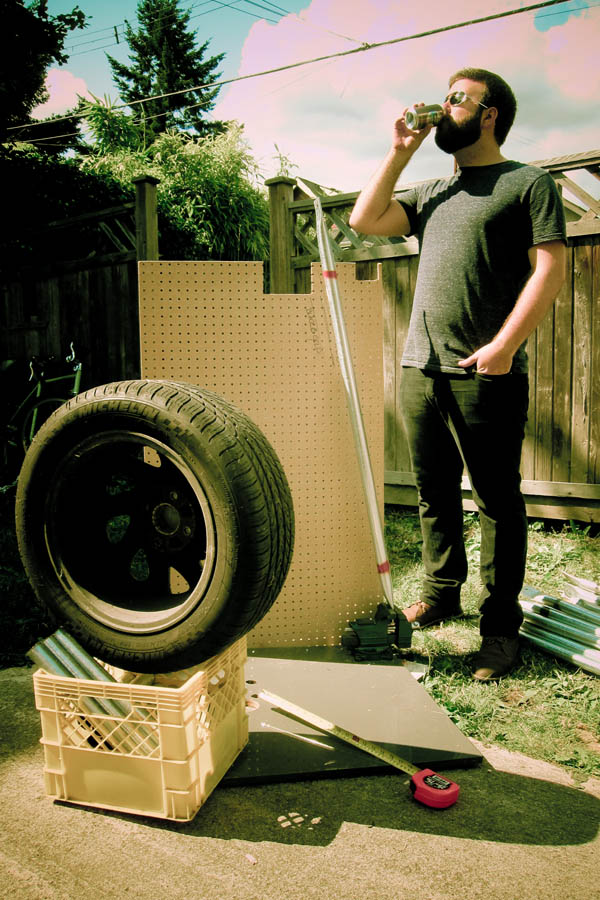
Step 5: GRINDING
Once each piece of steel tubing had both ends crushed, drilled, and bent, we had to smooth out the sharp edges from the cutting and drilling that could otherwise be safety hazards. You can use sandpaper if you’re looking to lose weight, but we did the job with my angle grinder, as seen in the video below.
Step 6: PAINTING
As previously mentioned, we had three different lengths of steel tubing, marked with paint stripes during the cutting. Using three different colours of spray paint specifically designed to prevent rust, we coated the tips, where corrosion would be most likely to occur. Here, the colour-coded steel tubing surrounds my 1979 Honda CM400T to dry the paint in the hot summer sun:
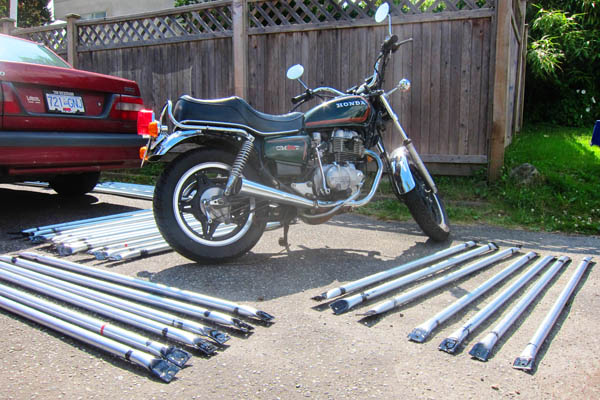
Painted steel tubing for a geodesic dome drying
To give you a better idea of steps 2 to 6, here’s a video showing each of these steps in order:
Step 7: CUT DOME COVER PANELS
A geodesic dome would be neat, but not particularly practical as a living space, without a cover to protect against the elements. Mark’s research led to the conclusion that Tyvek HomeWrap would be the best material with which to fashion a cover for the Bubble Dome. Two rolls of the stuff, bought at a secret mystery store, the identity of which shall never be revealed, could be cut into 9 panels to be sewn into a dome form.
These were BIG panels, so we needed a big and level working space to make them. Where else would a group of former UBC students go? The lobby of War Memorial Gym of course:
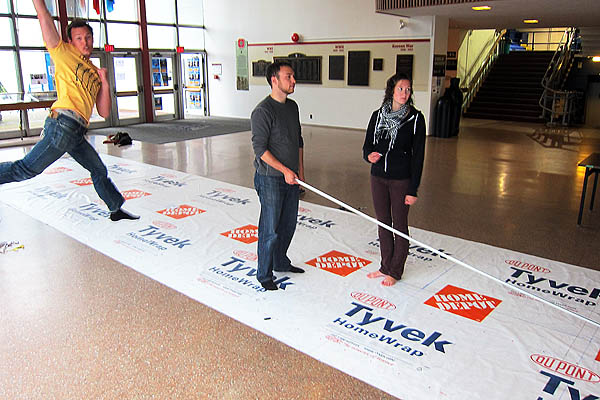
Preparing Tyvek sheeting for a geodesic dome cover
Shoes came off to protect the Tyvek, and we began marking out the cut lines as precisely as possible (the key to getting this right on the first try was having several math experts present). We left about 1″ of material outside of the marked lines, so that the panels could later be sewn together.
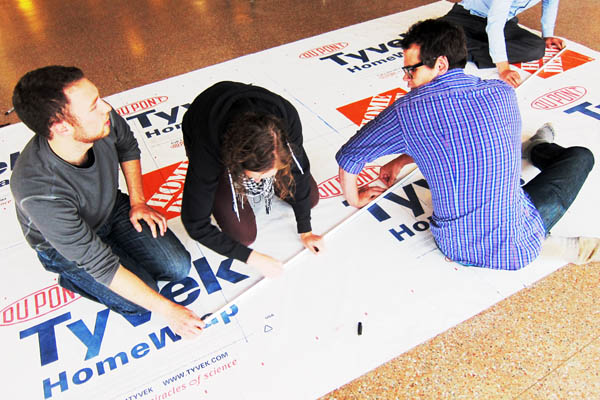
Cutting Tyvek sheeting for a geodesic dome cover
The bigger your scissors, the easier it is to cut Tyvek quickly and accurately along the lines. For some reason there’s a 10″ pair of scissors in my family’s house, and this is the first time I’ve found them useful instead of bizarrely oversized.
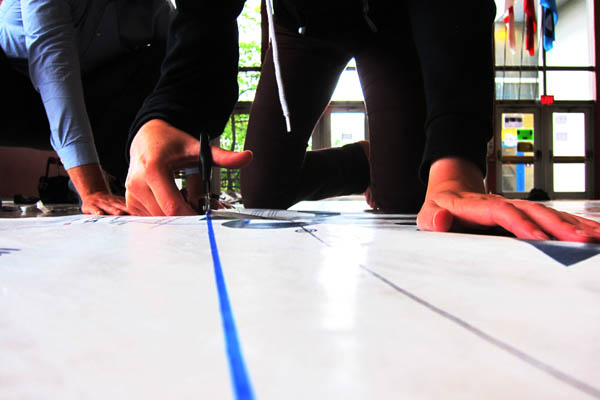
Cutting Tyvek sheeting for a geodesic dome cover
The internerds has a dome cover calculator, which you can find at Domerama.com. Incredible.
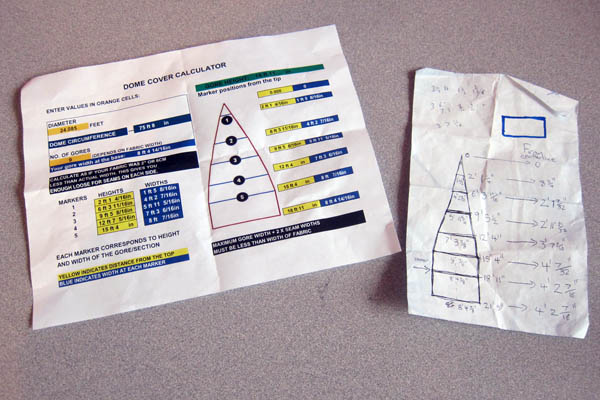
Dome cover calculator
One of the nine giant Tyvek panels we cut for our geodesic dome cover:
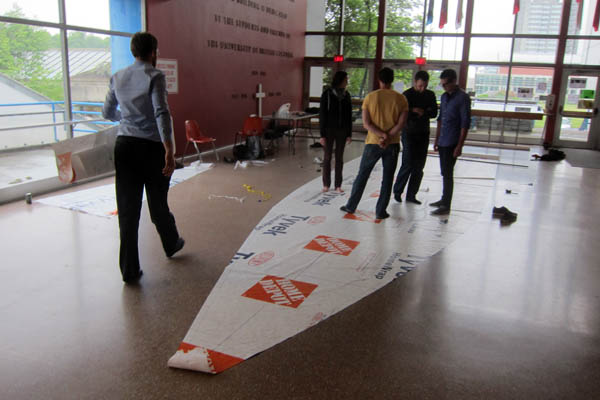
One of nine panels for our geodesic dome cover
Step 8: PAINT DOME COVER
The two steps of this process in which I didn’t manage to participate were the painting and sewing of the dome cover. Matthew researched and tested various types of paint on the Tyvek to determine what we could use without negatively affecting the tear-resistant and waterproof properties of the material, then he and John painted all sorts of crazy colourful patterns onto the panels.
Step 9: SEW DOME COVER
Once the paint had dried, a group returned with the panels to the War Memorial Gym lobby at UBC with a sewing machine and many helping hands to guide the panels while our expert seamstresses sewed the panels together with heavy duty thread (photo by Conrad Nickels).
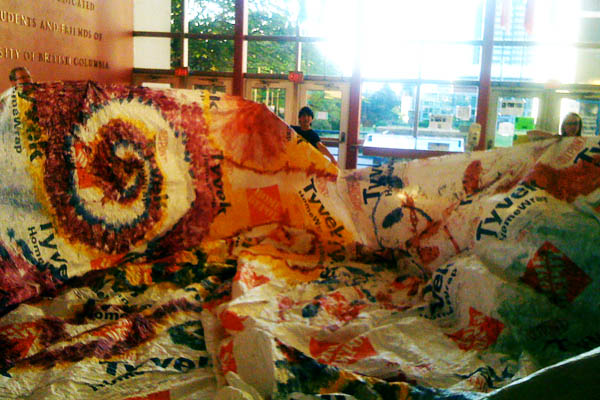
Tyvek dome cover painted and sewn together
With all nine panels sewn together, they ‘inflated’ the dome cover to test it, and it worked! (Photo by Conrad Nickels)
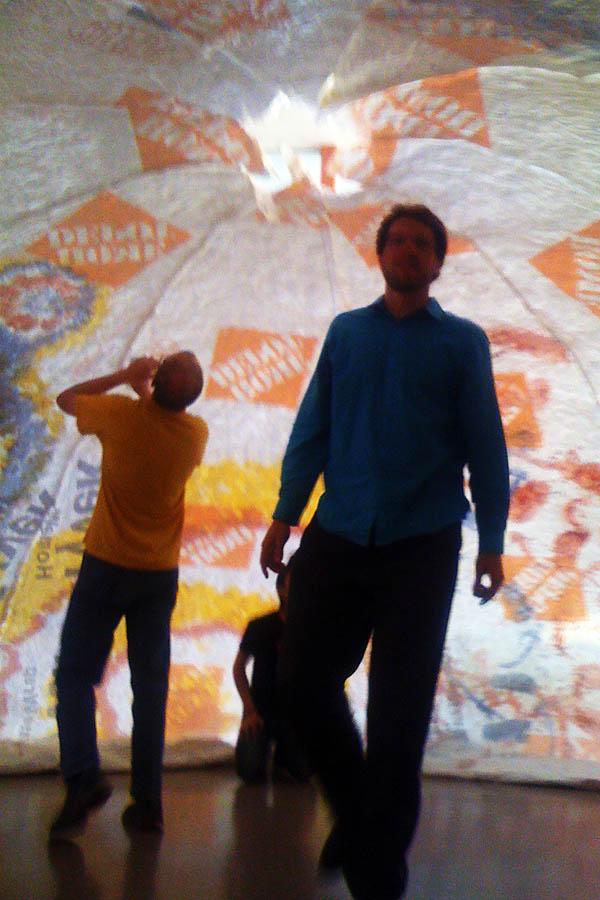
Testing the Tyvek geodesic dome cover
Step 10: TEST
We did a quick, partial test build in Matthew’s front yard, pleasantly surprising a number of neighbours and passers-by, learned a number of things about dome assembly in doing so, checked that the Tyvek dome cover fit properly, and then dismantled the whole thing immediately.
Here’s a video showing the group pulling the cover onto the dome while I was lying on my back on the ground filming. You’ll notice at one point, someone jumps down without looking and lands on my recently-operated knee. Luckily I moved just in time, and his foot glanced off the side of my knee instead of crushing it.
Step 11: TRANSPORT
On August 8th, Conrad picked me up and we drove across town to pick up the Bubble Dome. We loaded the entire geodesic dome – steel tubing, Tyvek cover, bolts, nuts, and washers, turbine air vent, and tools – into Conrad’s car.
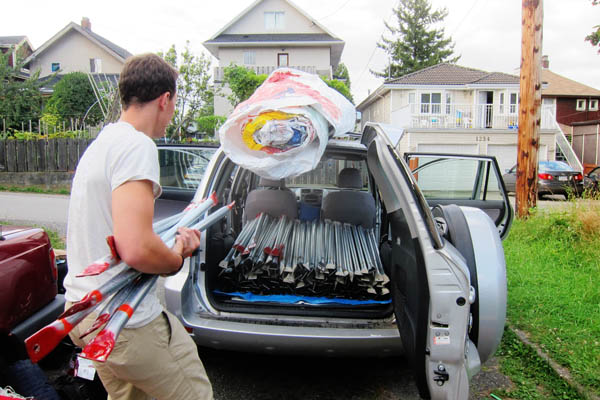
Loading the entire dome into Conrad’s car
The drive from Vancouver to Shambhala (just outside the town of Salmo, BC) took us about nine hours. By the time we arrived, we had both become experts at spotting deer from a great distance and slowing down to avoid hitting them, despite their best efforts. We arrived a little after 2am and spent the next seven hours waiting, trying to sleep, and occasionally driving from one part of the vehicle staging grounds to the next. By 9am we were through the gates and after a fair bit of searching, we found our friends who had reserved a spot among the thousands of tents, large enough to fit the Bubble Dome.
Waiting to get in:
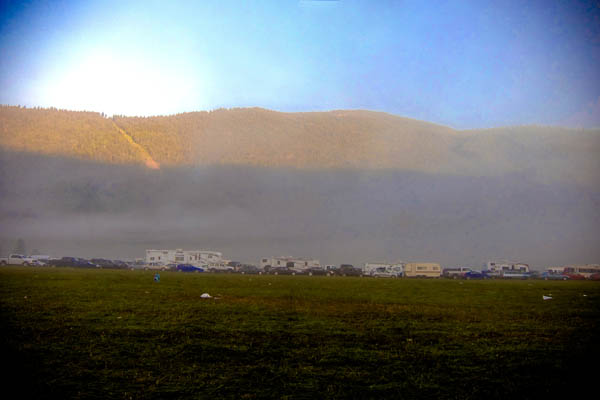
Thousands of vehicles wait through the night to enter Shambhala
Step 12: BUILD A BUBBLE DOME
Once the dome materials were unloaded, we started assembling our geodesic dome, being careful to place each colour-coded piece of steel tubing in the right place).
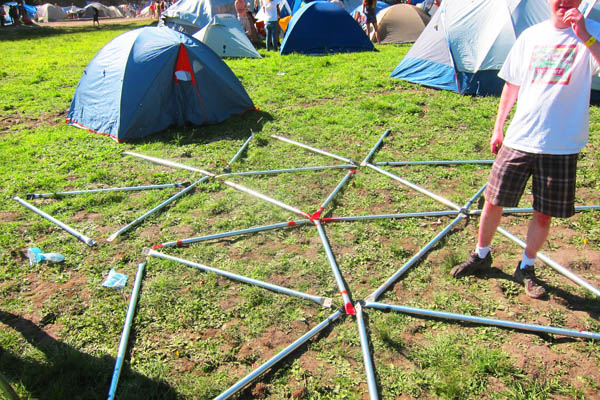
Starting our geodesic dome assembly at Shambhala:
3/8 sphere complete – only one layer left to reach our 5/8 sphere completed Bubble Dome:
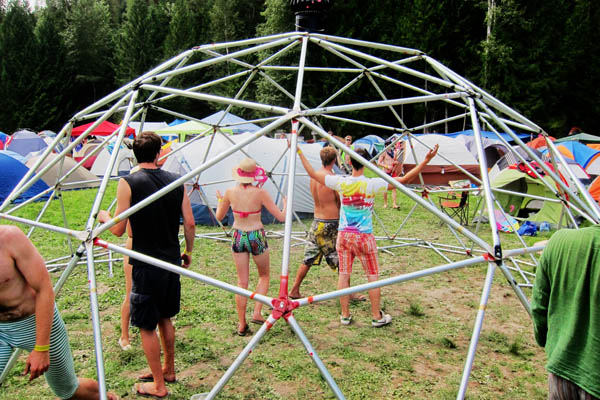
3/8 of the Bubble Dome complete
Alllllmost done! In total, it took us about three hours to assemble the Bubble Dome.
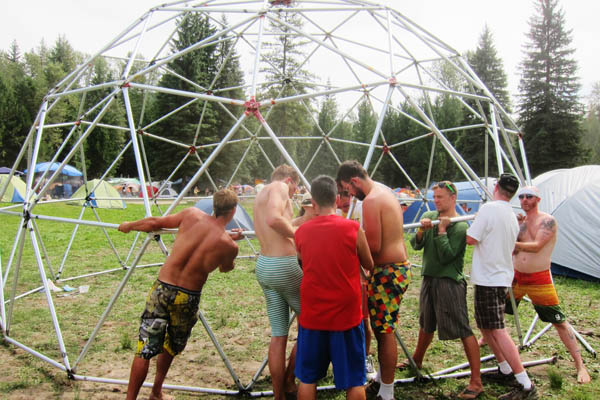
Almost completed Bubble Dome
Bubble Dome structure completed! It proved to be extremely strong and able to safely support any number of us climbing and jumping all over it:
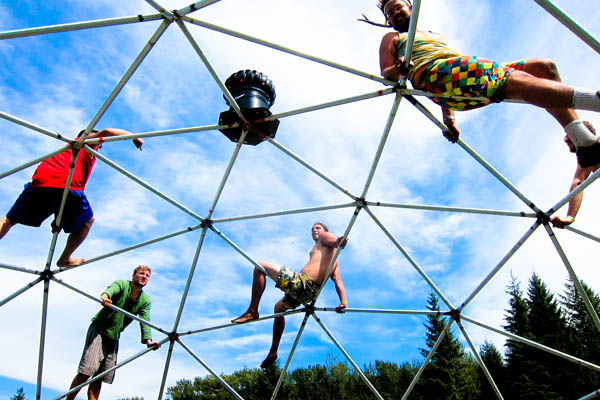
Testing the Bubble Dome: it works!
And then, for the Tyvek dome cover:
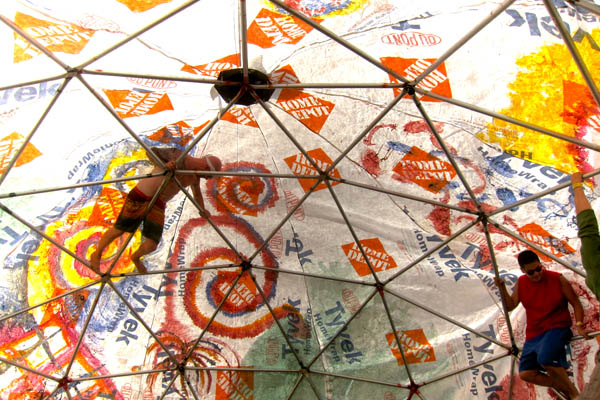
Bubble Dome with Tyvek cover in place
The final product, a Bubble Dome that was colourful on the inside, and white on the outside to reflect the intense sunlight, standing 16 feet high and 24 feet wide:
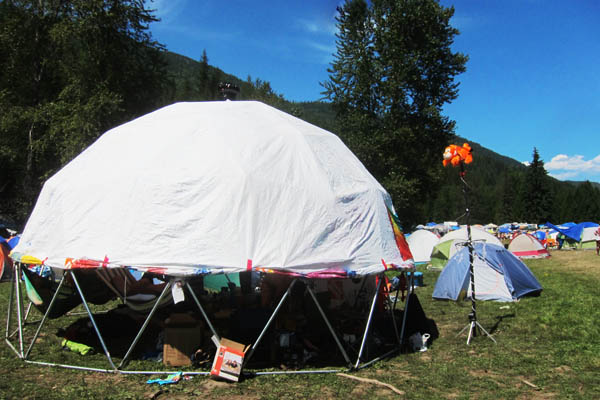
Our geodesic dome, with Tyvek cover rolled partway up, and Tigger totem
Daytime temperatures at Shambhala were in the high 30s every single day, roasting anyone who stayed out in the open sun or tried to hide in their tents, which acted like greenhouses. The weather inside our wonderful Bubble Dome, however, was perfectly comfortable! Many daytime naps were had.
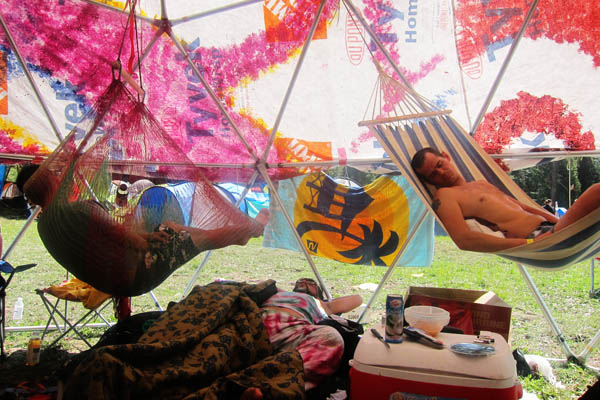
Sleeping arrangements in the Bubble Dome
My name is Chris Anderson and I’m interested in challenging work in humanitarian logistics, especially in emergencies. I’m always ready for new adventures, always willing to relocate. For me, home is where I hang my hat, and for the moment I like it that way. You can learn more about my qualifications by checking out my sites at photodiarist.com , ChristopherAnderson.ca , and http://Li.feProject.com/.



